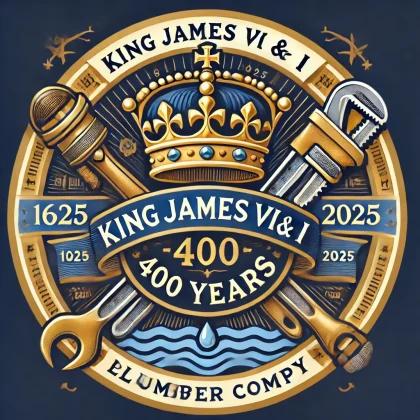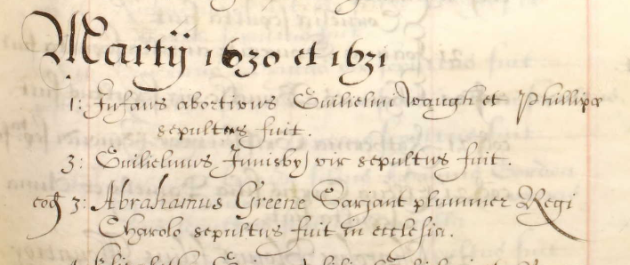The 400th anniversary of the death of King James VI and I
400 years ago, King James I died at Theobalds House—where he championed London’s fresh water supply. His ties to the Plumbers’ Company run deep: he granted its Royal Charter in 1611, appointing Abraham Greene as its first Master.

King James I of England and VI of Scotland (1566 –1625) died 400 years ago today, 27 March 1625, at his favourite country residence, Theobalds House in Hertfordshire. The artificial New River, to supply London with fresh drinking water, crossed the estate and James had personally rescued the project by buying half the shares in 1612. The previous year he granted the Plumbers’ Company a Royal Charter, which was on display when we visited The London Archives last month and governs the affairs of the Company to this day. Those reasons alone would be sufficient to justify the Company marking this 400th anniversary. However, there was also a more personal connection between the Company and the King in the person of Abraham Greene, who was appointed by the Charter as the Company’s first Master:
“11. And for the better execution of our will and grant in this behalf we have assigned nominated created constituted and made and by these presents for us our heirs and successors do assign nominate create constitute and make our beloved Abraham Green Citizen and Plumber of London and now our Serjeant Plumber to be the first and modern Master of the aforesaid Mystery of Plumbing of the City of London to continue in the same Office of Master of the Mystery aforesaid from the date of these presents until the 21st day of September now next ensuing if the same Abraham Green so long shall live and from thence until one other to the Office of Master of the Mystery aforesaid in due manner shall be elected preferred and sworn according to the ordinances and provisions below in the presents expressed and declared.”
Abraham Greene, the son of Thomas Greene, a shoemaker in the parish of Holy Trinity, Coventry, was, like King James, born in 1566. He was apprenticed as a plumber to Henry Smythe, a member of the Company, at Michaelmas (29 September) 1583. He married at St Andrew Holborn on 1 October 1594 and was appointed as Sergeant Plumber to Elizabeth I in 1603, just before her death. The royal accounts record that Abraham Greene, a “plomer”, was paid for “Lead soder” and for “the entombing of the corpse of her late majtie at Richmond.” He became a Warden of the Plumbers’ Company in 1604, was one of the signatories of the lease of Plumbers’ Hall from the Vintners’ Company in 1607 (see photo), and served as Master of the Company on five separate occasions, being elected for the last time in 1630.

On the death of James I in 1625, Abraham Greene was called upon to solder the king’s embalmed body into a lead coffin, which was then placed on a carriage at Theobalds and brought to Denmark House on the Strand in the early hours of the morning . The accounts for James I’s funeral (PRO LC 2/6, fo 3v)) record the following payment:
- Abraham Greene. For vessells of lead for Entombeinge of his Royall Corps and bowells.
- Abraham Greene for the Entombing of the Royall corps of our late soveraigne King James with lead sodder and workemanship being done at Theobalds.
- Item more for one vessell of lead to putt in the bowells of his Ryall Majestie with sodder and workemanship £xxv.
Jennifer Woodward in The Theatre of Death – The Ritual Management of Royal Funerals in Renaissance England, 1570-1625 notes that “separate burial [of the viscera] seems to have arisen out of necessity due to the length of time between the death of a monarch and the funeral. The viscera constitute the main corrupting agent of the corpse and their removal was a key element of the embalming process. The use of a viscera chest and its subsequent, often ritualised deposit permitted the unavoidable mutilation of the royal corpse to be accomplished with dignity.” James I’s funeral took place at Westminster Abbey on 17 May 1625.
Abraham Greene was the first Master Plumber to die in office, being buried on 3 March 1631 at St Martin-in-the-Fields, Westminster.

A week later the Court met to elect a new Master to succeed Abraham Greene:

Author: Hon. Archivist and Curator Michael Cooper OBE